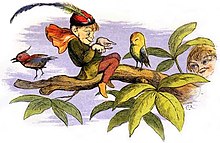
A fairy tale is a short story that belongs to the folklore genre. Such stories typically feature magic, enchantments, and mythical or fanciful beings. In most cultures, there is no clear line separating myth from folk or fairy tale; all these together form the literature of preliterate societies. Fairy tales may be distinguished from other folk narratives such as legends and explicit moral tales, including beast fables. Prevalent elements include dragons, dwarfs, elves, fairies, pixies, giants, gnomes, goblins, griffins, merfolk, monsters, talking animals, trolls, unicorns, witches, wizards, magic, and enchantments.
Fantastique is a French term for a literary and cinematic genre and mode that is characterized by the intrusion of supernatural elements into the realistic framework of a story, accompanied by uncertainty about their existence. The concept comes from the French literary and critical tradition, and is distinguished from the word "fantastic", which is associated with the broader term of fantasy in the English literary tradition. According to the literary theorist Tzvetan Todorov, the fantastique is distinguished from the marvellous by the hesitation it produces between the supernatural and the natural, the possible and the impossible, and sometimes between the logical and the illogical. The marvellous, on the other hand, appeals to the supernatural in which, once the presuppositions of a magical world have been accepted, things happen in an almost normal and familiar way. The genre emerged in the 18th century and knew a golden age in 19th century Europe, particularly in France and Germany.

Charleville-Mézières is a commune of northern France, capital of the Ardennes department, Grand Est. Charleville-Mézières is located on the banks of the river Meuse.

Terri Windling is an American editor, artist, essayist, and the author of books for both children and adults. She has won nine World Fantasy Awards, the Mythopoeic Fantasy Award, and the Bram Stoker Award, and her collection The Armless Maiden appeared on the short-list for the James Tiptree, Jr. Award.

Willy Ronis was a French photographer. His best-known work shows life in post-war Paris and Provence.
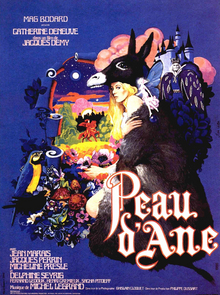
Donkey Skin is a 1970 French musical fantasy comedy film directed by Jacques Demy, based on Donkeyskin, a 1695 fairy tale by Charles Perrault about a king who wishes to marry his own daughter. It stars Catherine Deneuve and Jean Marais, with music by Michel Legrand. Donkey Skin proved to be Demy's biggest success in France, with a total of 2,198,576 tickets sold.
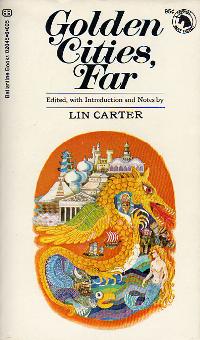
Golden Cities, Far is an anthology of fantasy short stories, edited by American writer Lin Carter. It was first published in paperback by Ballantine Books in October 1970 as the twenty-second volume of its Ballantine Adult Fantasy series. It was the third such anthology assembled by Carter for the series.
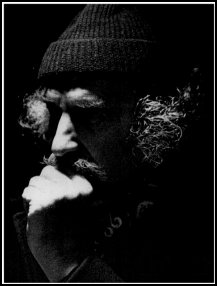
Claude Seignolle was a French author. His main interests were folklore and archaeology before he turned to fiction. He also wrote under the pseudonyms 'Starcante', 'S. Claude' and 'Jean-Robert Dumoulin'.

Christophe Richard Ely Van De Ponseele - professionally known as Richard Ely - is a Belgian writer, journalist and ethnobotanist. Main instigator of the ‘Trolls & Legends” Festival in Mons (Belgium), he is also the former editor-in-chief of Khimaira magazine and the creator of the blog Peuple féerique to which he still contributes today. His books are mainly specialized in fairies and/or nature.
The Centre de l'Imaginaire Arthurien is a cultural centre dedicated to the Matter of Britain. It was founded in 1988 in Rennes through the influence of different specialists in Arthurian legend, local politicians, artists and writers. Since 1990 its headquarters has been at the Château de Comper, in Paimpont Forest.
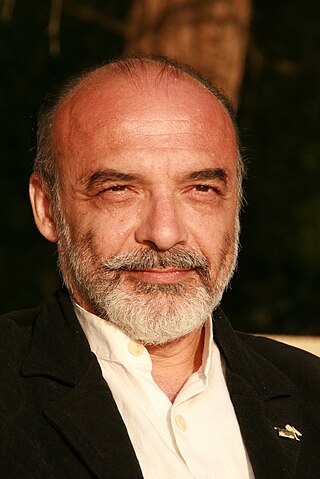
Édouard Brasey is a French novelist, essayist, scriptwriter and story-teller born on 25 March 1954. Author of more than seventy works, many of which have been translated into English, Russian, Japanese, Spanish, Portuguese and Italian. He specialises in the themes of the esoteric, fables, legends and fantasy. He won a prize of Imaginales in 2006 for La Petite Encyclopédie du Merveilleux, and a prize Merlin in 2009 for his novel La Malédiction de l'Anneau. Subsequently, he has become essentially a novelist, notably published by Calmann-Lévy. His historical-esoteric thriller that was published in 2013, Le Dernier Pape, anticipated the abdication of Benoît XVI.
Alain Dugrand is a French journalist, traveller and writer.

A groac'h is a kind of Breton water-fairy. Seen in various forms, often by night, many are old, similar to ogres and witches, sometimes with walrus teeth. Supposed to live in caverns, under the beach and under the sea, the groac'h has power over the forces of nature and can change its shape. It is mainly known as a malevolent figure, largely because of Émile Souvestre's story La Groac'h de l'île du Lok, in which the fairy seduces men, changes them into fish and serves them as meals to her guests, on one of the Glénan Islands. Other tales present them as old solitary fairies who can overwhelm with gifts the humans who visit them.

Lou Drapé is a legendary folkloric horse of the town of Aigues-Mortes in the Gard region, in the Petite Camargue marsh area of France. It is said to wander around the walls of the city at night and to take a large number of children on his back to abduct them. These children never return from this journey.

Garulfo is a six-volume fantasy graphic novel created by writer Alain Ayroles, cartoonist Bruno Maïorana and colorist Thierry Leprévost.
Margot the fairy is, in the traditions of Brittany and the Mayenne, the generic name for certain earthly fairies. They are best known in Central Brittany, particularly in the Côtes-d'Armor. Presumably descended from the fairy Morgana and before her from an aspect of Mother Earth, the Margot fairies are quite powerful. They can make themselves invisible, metamorphose and transform others. Reputed to be excellent dancers, often generous and sometimes cruel, they take pleasure in testing humans by giving them gold and objects. They are believed to have built several monuments, and to possess immense treasures hidden under the earth. They have animals, often cattle.

Pillywiggins are tiny goblins and fairies, guardians of the flora, mentioned in English and Irish folklore. Tiny in size, they have the antennae and wings of a butterfly or dragonfly, live in groups and spend their time frolicking among the flowers.
Jetins are small, imaginary creatures from Brittany, mostly mentioned by Paul Sébillot along the coast of Ille-et-Vilaine and on the island of Guernsey. Compared with similar lutins, they are characterized by their great strength, enabling them to throw huge boulders over very long distances, and by their habitat, mainly in rocks and caves on the shore. They also have a habit, much feared by humans, of kidnapping beautiful babies to replace them with their old-fashioned changelings. Pierre Dubois gives many details on the appearance of Jetins in La Grande Encyclopédie des lutins.
Fions are lutin-like creatures of the little people, mostly mentioned in the maritime folklore of Upper Brittany. They might be of English origin. Most of the stories about them come from Paul Sébillot's collections in the late 19th century. Characterized by their habitat in the rocks and caves of Brittany's northern shores, the Fions lead a military life in community with the houles fairies, as their servants. Organized into battalions, they are said to wage war on a golden ship. According to tales, they own and graze livestock, and sometimes give enchanted objects or food to humans. Pierre Dubois and Joann Sfar featured a Fion in the comic strip series Petrus Barbygère, in 1996 and 1997.

The legendary horses of Pas-de-Calais are fabulous, diabolical white animals, mentioned in the folklore of Artois, Ternoise and Boulonnais under various names. The blanque mare is said to appear at dusk or in the middle of the night to deceive children and men. She would tempt the latter to ride her, and her back could stretch to accommodate, usually, up to seven riders. Once they had settled on her back, she would lure them into traps or throw them into the water. This animal is also mentioned under the same name in Samer.

